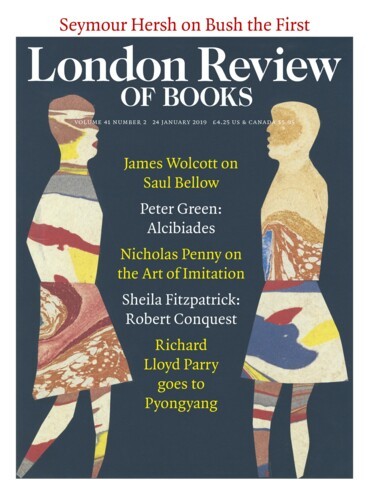In June 1982 I was spending my usual summer at the Aspen Center for Physics when I was approached by Philip Anderson. He was a very persuasive person who had won the Nobel Prize five years earlier. I didn’t really know him but he presented me with almost a command. It looked as if AT&T was going to be broken up and Anderson was worried about what might happen to Bell Laboratories, where he worked. He wanted me to write something about it, preferably for the New Yorker. My problem was that I knew almost nothing about Bell Labs. I knew that the transistor had been discovered there as had the radiation left over from the Big Bang. I also knew that it was an enormous laboratory employing some 25,000 people. Under these circumstances how could I possibly write something that made any sense? But Anderson is as I said a very persuasive person so I agreed to try something.
Jeremy Bernstein
Jeremy Bernstein’s Nuclear Iran will be published by Harvard in October.
Sometime in the winter of 1969 a Pakistani colleague told me that the Ford Foundation had created visiting professorships at the University of Islamabad and asked if I would like one. At the time I was always open to travel adventure so I said sure. After I was appointed, the question arose as to how to get there. To me the obvious answer was to drive. I put the proposition to William Shawn, the editor of the New Yorker, who thought it an interesting idea. The magazine put up enough money for me to buy a Land Rover Dormobile. This legendary vehicle, which is no longer manufactured, had sleeping bunks and a stove – perfect for the job. I enlisted my friend the Chamonix guide Claude Jaccoux and his wife Michèle and in early September we set out. It took about three weeks to drive from France through Italy, Yugoslavia, Greece, Turkey, Iran and Afghanistan and then over the Khyber Pass into Pakistan.
In the spring of 1959 I won a National Science Foundation fellowship that enabled me to do physics anywhere I wanted to. I chose Paris. I had spent the last couple of years at the Institute for Advanced Study in Princeton and wanted very much to go to a city. Murray Gell-Mann was paying a visit to Princeton at the time. I had written a paper with a colleague suggesting how an idea of Gell-Mann’s could be tested experimentally. He dropped round to my office and asked what I was doing the following year. I told him. To my surprise he said he was going to Paris too, and added: ‘Stick with me, kid, and I’ll put you on Broadway.’ I didn’t then tell him that I was familiar with him from another life.
Trevor Nunn’s movie Red Joan, starring Sophie Cookson and Judi Dench, claims to be ‘based on incredible true events’, namely the life of Melita Norwood. But the story told by the film is so far from the truth it’s nonsense.
The Vice President’s Men
24 January 2019
Pieces about Jeremy Bernstein in the LRB
A Cheat, a Sharper and a Swindler: Warren Hastings
Brian Young, 24 May 2001
Early in his career as the first Governor-General of the East India Company in Bengal, Warren Hastings instituted an annual dinner for fellow old boys of Westminster School. He paced his own...
Read anywhere with the London Review of Books app, available now from the App Store for Apple devices, Google Play for Android devices and Amazon for your Kindle Fire.
Sign up to our newsletter
For highlights from the latest issue, our archive and the blog, as well as news, events and exclusive promotions.


